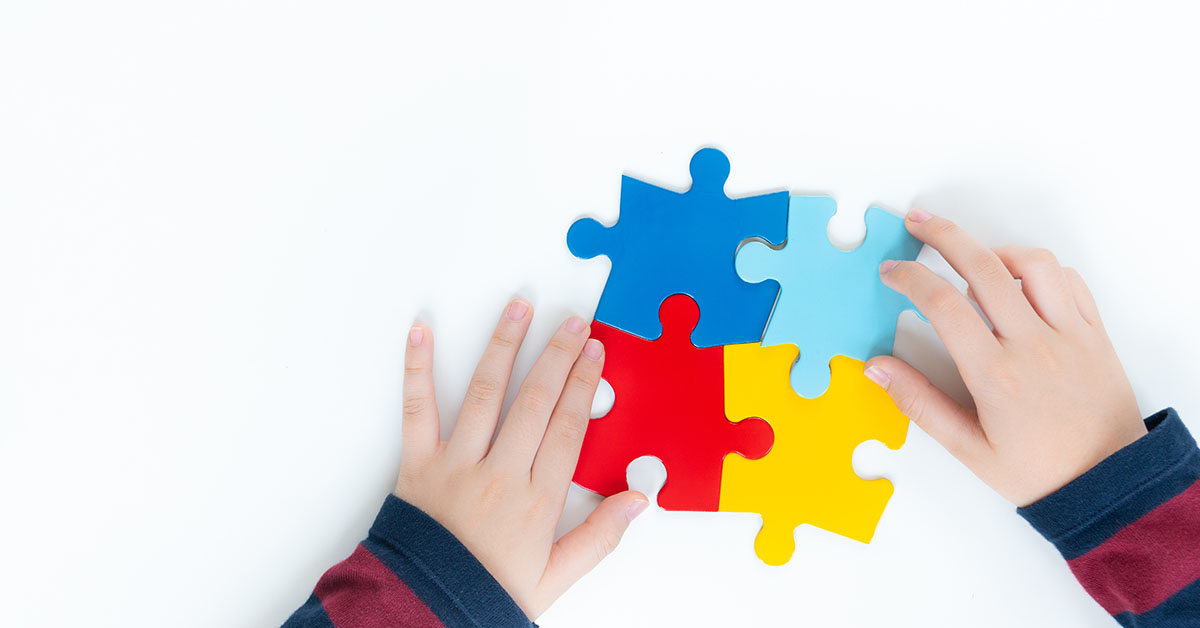Cutting-edge Treatments and Therapies: Breakthroughs in Autism Study
Cutting-edge Treatments and Therapies: Breakthroughs in Autism Study
Blog Article
Discovering Autism: Methods for Efficient Interaction and Interaction
Reliable communication and communication with individuals on the autism range require a comprehensive understanding of their one-of-a-kind requirements and choices. The ins and outs of these approaches expose further factors to consider that merit expedition, particularly in exactly how they can be adjusted to diverse contexts and specific experiences.
Understanding Autism Range Disorder
Autism Spectrum Problem (ASD) encompasses an array of neurodevelopmental conditions defined by obstacles in social interaction, interaction, and repetitive habits. The term "range" reflects the diverse indications and varying degrees of intensity experienced by people with ASD. While some may display substantial impairments, others might present high-functioning traits, enabling for better freedom in day-to-day life.
The start of ASD usually takes place in early childhood, with indications typically identifiable by age two. Very early indicators may consist of postponed speech growth, restricted eye call, and difficulties in comprehending social cues. The accurate etiology of ASD stays vague, research recommends a combination of ecological and hereditary factors plays an essential duty in its growth.
Individuals with ASD often have unique staminas, such as increased focus to information and remarkable memory skills. They may struggle with understanding abstract concepts and managing adjustments to routine - autism. Consequently, treatments and assistance tailored to private needs are necessary for fostering communication and social abilities. Acknowledging the intricacy of ASD is essential for advertising understanding, acceptance, and reliable techniques that promote significant interactions with individuals on the spectrum.

Significance of Clear Interaction
Effective communication is crucial for promoting understanding and link, specifically for individuals with Autism Spectrum Condition (ASD) Clear communication not just facilitates social interactions but additionally improves the individual's ability to share their needs, ideas, and feelings. For individuals with ASD, the nuances of language can often be testing; for that reason, making use of simple and distinct language is vital.
Additionally, clear communication helps decrease stress and stress and anxiety that might occur from misunderstandings. When messages are shared in a constant and straight manner, individuals with ASD are better outfitted to analyze details properly, which can significantly enhance their social interaction and engagement in different setups.
Developing regimens and making use of aesthetic supports can better boost clear communication. These techniques offer people with foreseeable structures that help understanding and retention of details. In addition, proactively being and listening individual during interactions promotes an encouraging setting where people with ASD really feel valued and understood.
Inevitably, prioritizing clear interaction not only encourages people with ASD however additionally fosters even more purposeful links with their peers, caregivers, and the bigger area, paving the means for comprehensive communications and joint partnerships. - autism
Non-Verbal Communication Methods
Interaction prolongs beyond words, and for individuals with Autism Range Condition (ASD), non-verbal cues play a substantial function in interactions. Non-verbal communication techniques can consist of faces, motions, body movement, and eye call, every one of which work as vital components for conveying feelings and objectives.
Comprehending and interpreting these non-verbal signals can improve interactions with individuals with ASD. A cozy smile or open posture can create a welcoming environment, motivating interaction. In a similar way, utilizing aesthetic aids-- such as image cards or icons-- can bridge communication voids and aid share messages extra properly.
It is also crucial to be conscious of personal room, as people use this link with ASD might have different comfort levels pertaining to proximity. Observing their responses to physical distance can Recommended Site inform proper adjustments.

Developing Helpful Environments
Creating an encouraging environment is essential for promoting positive interactions and boosting the well-being of people with Autism Spectrum Problem (ASD) Such settings can substantially reduce anxiousness and develop a sense of safety and security, permitting people to reveal themselves much more openly.
To attain this, it is vital to take into consideration sensory level of sensitivities that individuals with ASD might experience. Customizing the physical room to consist of soft illumination, very little history noise, and comfortable seating can develop a relaxing atmosphere. In addition, making use of constant regimens and clear visual routines can assist individuals anticipate shifts and decrease unpredictability, further advertising comfort.
Social spaces need to be structured to weblink lessen overwhelming stimuli while giving chances for engagement in favored tasks. Promoting areas designated for silent time can also work as a sanctuary during minutes of tension. Significantly, incorporating components of choice equips individuals, allowing them to work out company in their atmosphere.
:max_bytes(150000):strip_icc()/GettyImages-1377530534-2000-fc355c43782b496c947c182d17b8b5db.jpg)
Motivating Social Interactions
Cultivating social interactions among people with Autism Range Disorder (ASD) requires intentional techniques that focus on convenience and interaction. Developing predictable regimens can help reduce anxiousness, making social settings extra friendly. Producing organized atmospheres with defined roles and responsibilities enables people to involve without the frustrating pressure of unstructured social dynamics.
Integrating passions and toughness into social activities can act as a driver for communication. For instance, arranging group tasks around shared pastimes or topics of attraction can facilitate all-natural discussions and connections. Additionally, making use of aesthetic assistances, such as pictorial schedules or social manuscripts, can help in understanding social signs and expectations.
Designing suitable social habits is crucial - autism. Peers and grownups ought to demonstrate efficient communication methods, consisting of energetic listening and turn-taking. Role-playing circumstances can also offer a secure space for people to practice these abilities
Last but not least, fostering peer relationships via inclusive methods is important. Motivating comprehensive playdates or team trips can develop chances for socializing in a comfortable setup. By implementing these instructors, caregivers and strategies can considerably boost social interactions for individuals with ASD, advertising their overall social development and health.
Verdict
In final thought, effective interaction and interaction strategies are necessary for sustaining individuals with Autism Range Problem. Inevitably, these strategies empower individuals with autism to navigate social landscapes, promoting their general wellness and allowing the growth of long-term connections.
Reliable interaction and interaction with individuals on the autism spectrum necessitate an extensive understanding of their one-of-a-kind demands and choices. Clear communication not just helps with social interactions yet likewise improves the person's capacity to share their needs, ideas, and feelings.Promoting social interactions amongst people with Autism Spectrum Problem (ASD) calls for deliberate techniques that focus on convenience and involvement. By executing these educators, caretakers and strategies can significantly boost social communications for people with ASD, promoting their general social advancement and wellness.
In verdict, reliable interaction and communication techniques are vital for supporting people with Autism Spectrum Condition.
Report this page